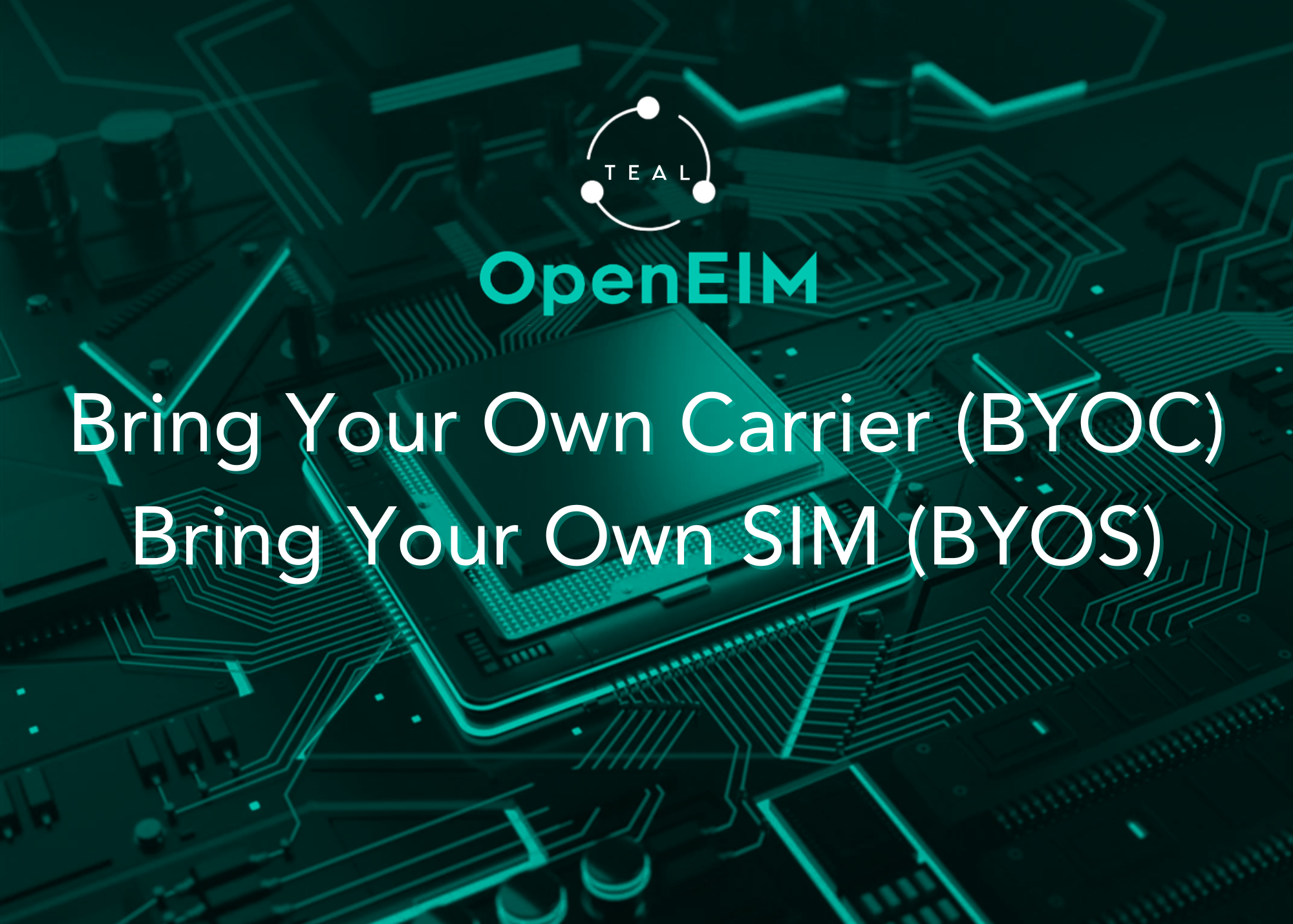Bring Your Own SIM and Bring Your Own Carrier with OpenEIM

The future of IoT connectivity is here—accessible, flexible, and free-to-play
Break free from conventional connectivity limitations! Let’s face it, when it comes to high-data, mission critical solutions, traditional connectivity solutions like MVNOs just aren’t cutting it anymore. Ensuring that your solutions are always connected to the best global cellular networks is more important than ever and now you can get the control and flexibility to keep your devices connected at all times, no matter where they’re deployed.
TEAL recently launched a new approach to eSIM management that simplifies how businesses connect their devices to global carriers. This blog breaks down the key features of TEAL’s new offering, OpenEIM, emphasizing its standout Bring Your Own SIM (BYOS) and Bring Your Own Carrier (BYOC) capabilities.
What is OpenEIM?
OpenEIM, an innovative SGP.32 eIM (eUICC IoT remote Manager) is an open and free system designed to simplify eSIM management and to overcome the limitations of conventional, static solutions. Traditionally, managing eSIMs has been riddled with challenges such as carrier restrictions, vendor lock-in, complex ecosystems and a lack of interoperability. OpenEIM addresses these challenges by offering a more flexible alternative. With the freedom to Bring Your Own SIM cards and carrier preferences onto the TEAL platform, Original Equipment Manufacturers (OEMs) and enterprises can now leverage eSIM technology for their needs without unnecessary constraints.
Bring Your Own SIM (BYOS): Simple SIM Integration
One of OpenEIM’s core features is its BYOS functionality, which lets businesses use the SIM cards already included with their devices, removing the necessity for purchasing and activating additional plastic SIMs. This not only eases supply chain management but eliminates the technical difficulties that arise during SIM swaps.
OpenEIM opens the door for businesses to easily integrate their own SIMs into IoT devices. Historically, eSIM systems presented barriers due to costs and technical complexities. BYOS paves the way for an easier, more streamlined IoT connectivity experience.
Bring Your Own Carrier (BYOC): Flexible Connectivity
Another key capability of OpenEIM is BYOC, which provides free self-serve tools for clients to deploy their existing carrier relationships with “Bring Your Own Carrier” (BYOC) technology. BYOC eliminates vendor and service provider lock-in through a free and open platform.
OpenEIM is particularly valuable for OEMs and Mobile Network Operators (MNOs) who prioritize maintaining control over their network relationships. Ultimate optionality provided by BYOC ensures seamless integration with different carriers, enabling enterprises to adapt quickly to changing market demands and emerging technologies.
OpenEIM eliminates conventional hurdles, enabling true cellular networking freedom for hardware OEMs, second-generation eSIM solutions, Bring-Your-Own-SIM (BYOS), and Bring-Your-Own-Carrier (BYOC) customers.
Who Benefits from OpenEIM?
OpenEIM creates value for a range of stakeholders in the IoT ecosystem:
- OEMs and Mobile Network Operators (MNOs): With more connectivity options on hand, these stakeholders can create enhanced product experiences tailored to diverse customer needs. OpenEIM’s flexibility allows them to shift between carrier profiles effortlessly, addressing a broader range of requirements.
- Enterprises: The significant reduction in complexity and the improved autonomy translate into more time for businesses to focus on their core objectives. OpenEIM simplifies IoT connectivity while keeping costs in check, making it an ideal solution for enterprises aiming for efficient operations.
Is OpenEIM Really Free?
One of the most intriguing aspects of OpenEIM is TEAL’s pricing model. The platform is available for free, enabling organizations of all sizes to access its core features without extra costs. TEAL’s approach is grounded in accessibility, inviting a wider audience to experience efficient IoT connectivity.
By offering its foundational features without charge, TEAL attracts businesses that may later choose to explore TEAL’s advanced offerings, such as global network access and in-depth API integrations. This model reflects TEAL’s confidence in its technology and its commitment to meeting organizations’ evolving connectivity needs.
TEAL’s OpenEIM opens the door to a new era of cellular IoT connectivity by addressing the typical challenges associated with eSIM management. Features like BYOS and BYOC have been designed to deliver users greater control, adaptability, and simplicity, all while remaining cost-effective.
For OEMs, MNOs, and enterprises looking to streamline their connectivity and maintain flexibility in their operations, OpenEIM is a forward-thinking solution that’s unmatched by anything on the market today. Explore what OpenEIM can do for your business and find out how easy it is to bring your own SIM cards and carrier preferences onto the TEAL platform, at no cost.
Contact Us Today!
Recent Posts
4 Connectivity Myths Holding Your Business Back
Teal Communications Staff2025-08-26T19:12:05+00:00
Cellular Connectivity: The Nervous System of Physical AI
Teal Communications Staff2025-08-18T19:26:43+00:00
Why TEAL’s Network Orchestration Beats Traditional MVNOs for FAA Part 108 Compliance
Teal Communications Staff2025-08-14T20:46:34+00:00




